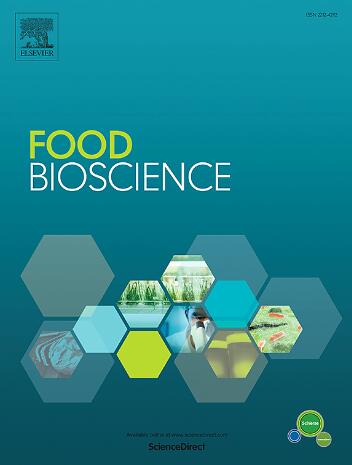Insights into Leuconostoc-clade as starters in Chinese paocai: Shaping microbial communities for rapid, safe, and flavor-preserving fermentation
IF 4.8
1区 农林科学
Q1 FOOD SCIENCE & TECHNOLOGY
引用次数: 0
Abstract
Chinese paocai features diverse vegetable substrates and distinct regional flavors but is prone to food safety issues caused by non-lactic acid bacteria (non-LAB). LAB starter cultures are a key strategy for regulating fermentation, yet developing LAB strains that suppress non-LAB while preserving regional flavors across different paocai types remains a challenge. This study investigated microbial community succession in six vegetable substrates during natural and LAB-inoculated fermentation through dynamic monitoring of pH, nitrite levels, and microbial composition, complemented by genotypic, phenotypic, and direct-inoculation analyses of representative LAB strains. The results revealed that Lactobacillaceae, the dominant group during paocai fermentation (relative abundance increasing from 0.18 %-8.11 % to 58.57 %–81.85 %), can be phylogenetically divided into the Leuconostoc-clade (dominating initial-to-middle stages with a relative abundance of 0.18 %–48.36 %) and the Lactobacillus-clade (dominating late stage with a relative abundance of 3.6 %–71.09 %). Unlike Lactobacillus-clade, which exclusively metabolizes glucose to produce lactic acid via the homofermentation pathway, the Leuconostoc-clade can metabolize glucose, fructose, and sucrose in vegetables indiscriminately, thereby rapidly producing diverse organic acids via the obligate heterofermentative pathway, which initiated fermentation and nitrite degradation while inhibiting Enterobacteriaceae, Erwiniaceae, Pseudomonadaceae, and Micrococcaceae. Meanwhile, as a starter culture, the limited acid tolerance of Leuconostoc-clade prevents over-acidification and preserves the indigenous LAB community, maintaining organic acid and volatile compound profiles similar to natural fermentation. Therefore, the Leuconostoc-clade represents a valuable resource for starter strains that can adapt to various vegetable substrates, rapidly initiate fermentation, inhibit non-LAB, prevent over-acidification, and preserve the regional flavors of Chinese paocai.
求助全文
约1分钟内获得全文
求助全文
来源期刊

Food Bioscience
Biochemistry, Genetics and Molecular Biology-Biochemistry
CiteScore
6.40
自引率
5.80%
发文量
671
审稿时长
27 days
期刊介绍:
Food Bioscience is a peer-reviewed journal that aims to provide a forum for recent developments in the field of bio-related food research. The journal focuses on both fundamental and applied research worldwide, with special attention to ethnic and cultural aspects of food bioresearch.
 求助内容:
求助内容: 应助结果提醒方式:
应助结果提醒方式:


